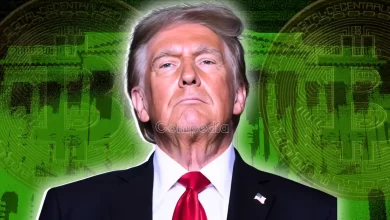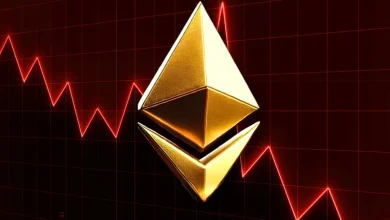Bitcoin has rallied recently, coinciding with a move by the US government to purchase bonds through stablecoins.
The US Treasury bond market is experiencing a slow-motion crash, with long-term bonds trading at nearly half their face value.
Bitcoin's rally underscores the growing role of cryptocurrencies as alternative financial instruments.
The finance world is a fascinating one. Each rise and fall grabs headlines and bring with it setbacks for few but opportunities for many.
Now, Bitcoin has once again taken the spotlight with its recent rally. But this time, it’s not just the digital currency enthusiasts taking notice; it coincides interestingly with a bold move by the United States government involving stablecoins, particularly the controversial USDT Tether.
The plot thickens against the backdrop of a staggering $24 trillion problem haunting Wall Street, revolving around the nosedive in the value of U.S. Treasury bonds. Picture this – the U.S. government wading into the cryptocurrency waters, purchasing bonds through stablecoins, notably USDT Tether. It’s a financial theater with Bitcoin as the lead, and stablecoins playing a pivotal supporting role.
USDT Tether’s Controversy
At the heart of this drama lies the controversial USDT Tether, a financial concoction supposedly derived from Bitcoin and supposedly backed by the U.S. dollar. The catch? The dollar itself isn’t tethered to any tangible asset.
Cue the skepticism. This intricate dance between Bitcoin, stablecoins, and traditional financial instruments raises a barrage of critical questions about the stability and future of cryptocurrencies when conventional markets teeter on the edge.
Also Read: Is Tether’s Stability at Risk? U.S. Treasury Official Sounds Alarm
Wall Street is Falling
The U.S. Treasury bond market is experiencing a slow-motion crash, with long-term bonds trading at nearly half their face value. This unusual scenario sends shockwaves of concern about inflation and government spending. High-profile investors, including the likes of Bill Ackman and Ray Dalio, wave warning flags, pointing at the government’s borrowing habits and the bond market’s response as ominous indicators of an impending financial crisis.
Economists and strategists are locked in a fierce debate over interpreting these events. Is the bond market’s decline a glaring sign of an impending debt crisis, fueled by extravagant government spending and an overstretched national debt? Or, as investment director Amar Reganti argues, is this merely a recalibration of Treasury yields, reflecting changing growth expectations and policy rates rather than a full-blown debt crisis?
How Cryptocurrency Takes the Spotlight
Bitcoin’s rally in this tumultuous market scenario underscores the growing role of cryptocurrencies as alternative financial instruments. The interplay between digital currencies and traditional bonds poses new challenges and opportunities for investors. As cryptocurrencies like Bitcoin continue to gain traction, their resilience and behavior in the face of traditional market downturns will be closely monitored.
Also Read: Bitcoin Frenzy: SEC Filings Surge 35% as Crypto Adoption Accelerates
As Wall Street grapples with these unfolding events, the interplay between Bitcoin, stablecoins, and traditional financial instruments like U.S. Treasury bonds remains a critical area of focus.







